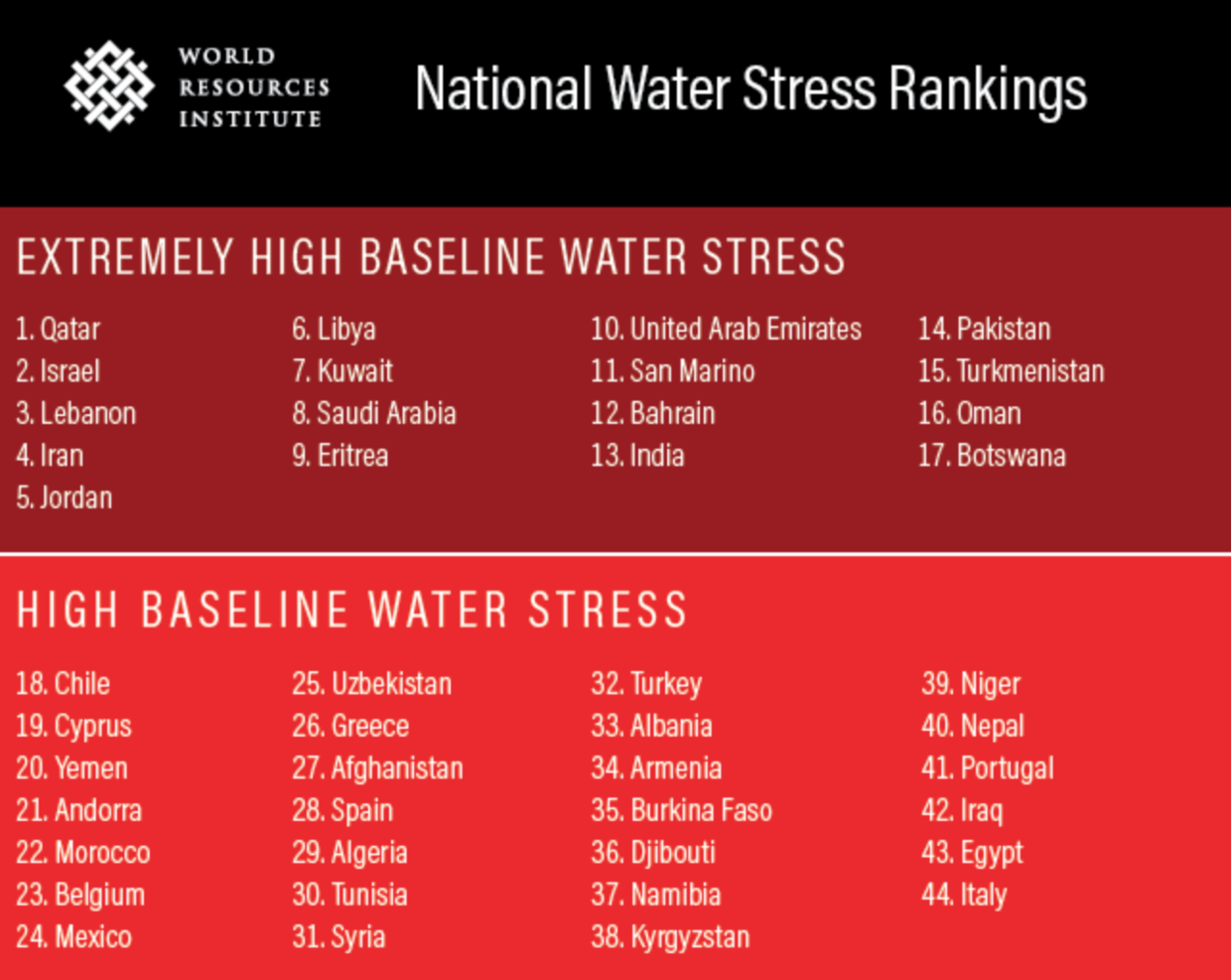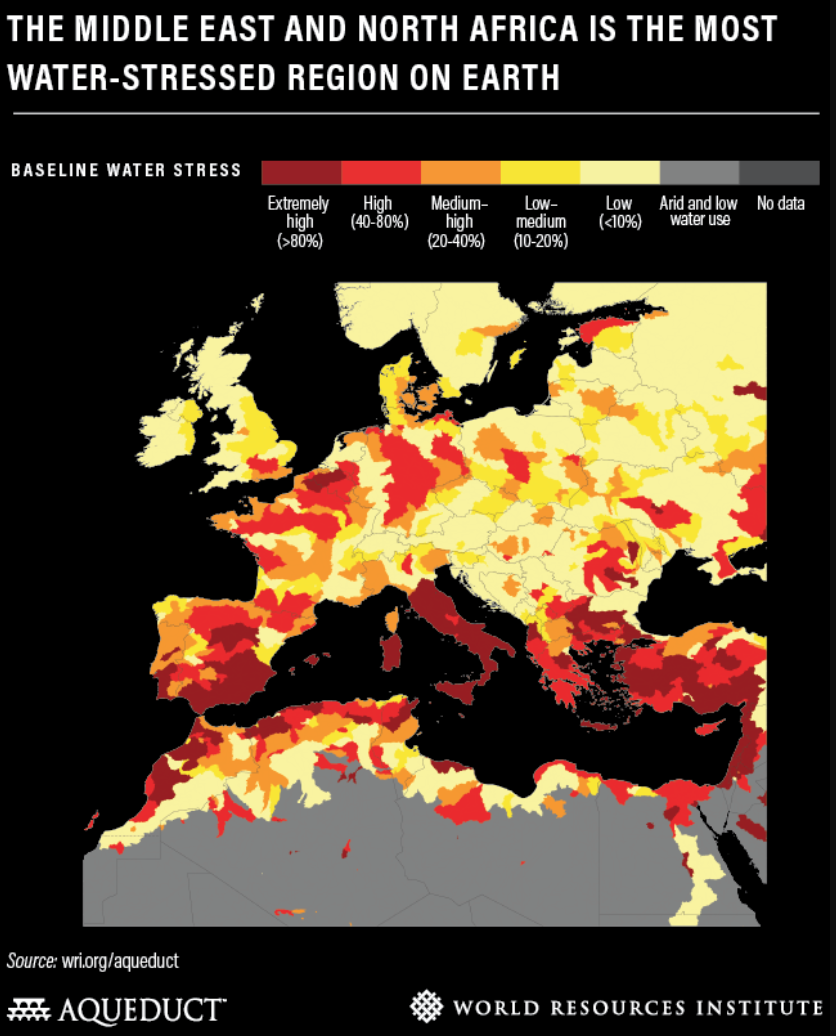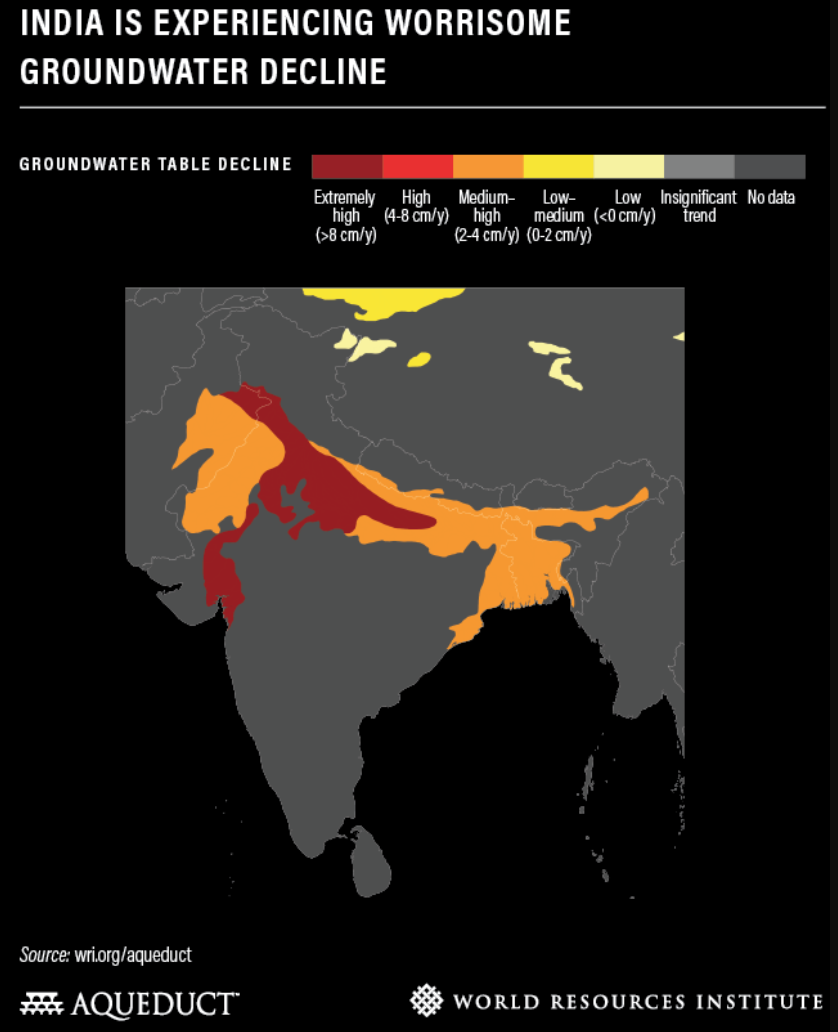Quarter of world’s population suffers ‘extreme water stress’, India overshadows the list
While ranked ‘only’ 13th in the water scarcity list, India has more than three times the population of all 17 other countries the World Resources Institute found to be facing “extremely high” water stress levels.
A quarter of the world’s population residing in seventeen countries is facing “extremely high” levels of baseline water shortages, using over 80 percent of the local renewable supply, updated Aqueduct Water Risk Atlas data compiled by the World Resources Institute (WRI) showed.

The report named Qatar as the globe’s most water-stressed country, followed by Israel, Lebanon and Iran.Twelve countries outlined in the WRI index are found in the Middle East and North Africa, where the hot and dry climate leaves water supply levels at a natural disadvantage. However, the growing demands from irrigated agriculture, as well as other industries and municipalities, “have pushed countries further into extreme stress,” the study warns. To avoid the so-called “Day Zero” scenario, where water will simply run dry, WRI advises the countries in the region to first start reusing their wastewater, especially for industrial and agricultural needs.

India, which has “more than three times the population of the other 17 extremely highly stressed countries combined,” is ranked 13th on the list. To solve the extreme shortages, the government of Narendra Modi has recently established a separate 'Jal Shakti Ministry' to deal with conservation and proper management of water resources.
In addition to rivers, lakes and streams, India’s groundwater resources are severely overdrawn, largely to provide water for irrigation. Groundwater tables in some northern aquifers declined at a rate of more than 8 centimeters per year from 1990-2014.
With an ambitious government plan to bring pure running water to all rural households within the next five years, WRI advises New Delhi to pursue the exploration of “efficient irrigation; conserving and restoring lakes, floodplains, and groundwater recharge areas; and collecting and storing rainwater.”

Overall WRI study discovered that water withdrawals globally have more than doubled since the 1960s. At present, one-third of the world's population residing in 44 countries face “high” levels of stress, where on average more than 40 percent of available supply is withdrawn every year. Unless better water resource management is adopted the trend is expected to continue in the future
“Water stress is the biggest crisis no one is talking about,” said Dr. Andrew Steer, President and CEO of the World Resources Institute. “Its consequences are in plain sight in the form of food insecurity, conflict and migration, and financial instability.”
Also on rt.com Water scarcity by 2030: True for every second person on earth, UN saysThink your friends would be interested? Share this story!














